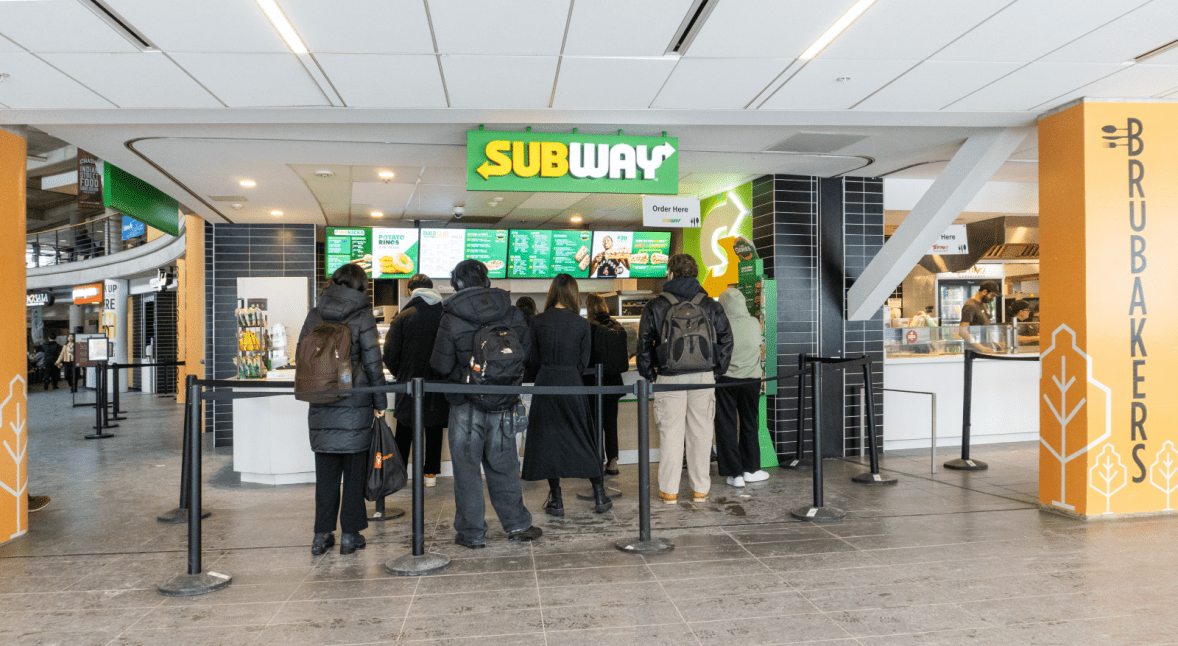While the global economy continues to recover from the lingering effects of COVID-19 lockdowns, the cost-of-living crisis remains a cause for concern for Canadians, especially students. According to data from Statistics Canada, the consumer price index (CPI) – a measure of price changes over time as experienced by consumers — increased from a value of 149.4 in December 2019 to 188.0 in December 2024 for groceries, and from 157.9 in December 2019 to 188.3 in December 2024 for food purchased from restaurants. This represents a 26 per cent increase in national grocery prices and a 19 per cent increase in national restaurant food prices over a five-year period. For context, a CPI of 100 represents prices in the year 2002, which are used as a baseline reference.
In an episode of the Eh Sayers podcast released on May 8, 2024, Taylor Mitchell, a senior economist working for Statistics Canada, explained some of the macroeconomic factors driving this massive inflationary spike in food costs in recent years. “We’ve seen droughts and rain impacting supply and shortening the growing season. We’ve seen Russia’s invasion of Ukraine, which had a very noticeable impact, especially if you’re someone that likes to buy bread or pasta or anything that contains wheat… And we have trade embargoes with Russia that have reduced supplies for some other inputs.”
That brings some clarity to rising food prices on a macro scale, but how about something much closer to home? A large majority of UW’s student population consumes food in and around campus, with two major players largely controlling the market — UW Food Services, with locations all across campus, and WUSA Food Services, which concentrates its activities within the confines of the SLC. What factors affect food prices on campus, and perhaps more importantly, are there any measures being taken to keep food prices on campus under control?
Both parties mentioned similar core factors affecting product pricing — cost of goods (both raw and processed), cost of labour, and perhaps somewhat surprisingly, the cost of packaging – the latter of which was significant for both UW Food Services and WUSA. According to Lee Elkas, director at UW Food Services, seasonal fluctuations in the cost of goods are also a significant factor, though these are mitigated through pricing contracts that are negotiated with suppliers ahead of time based on cost forecasts. Furthermore, Elkas highlighted that while a three to five per cent annual increase in prices due to inflation is standard for the food service industry, the post-COVID period has seen inflationary cost increases in the eight to ten per cent range, more than doubling the industry standard. A price analysis by Imprint using data provided by UW Food Services showed that UW food prices have increased by an average of 31.34 per cent over the last five years, compared to the industry average of 17.25 per cent.
On the other hand, Hannah Wardell, media relations manager for WUSA, highlighted wholesale prices of retail items, such as soft drinks and prepackaged snacks, as a limiting factor for prices of products at Flock Stop. She mentioned that Flock Stop operates with gross margins ranging from 20 to 50 per cent depending on the product being sold. “This does not mean we’re making 20 to 50 per cent profit as a store, but the markup from the wholesale cost is in that range. This is lower than most convenience stores and other food outlets,” Wardell clarified.
One factor unique to Flock Stop is the rebrand it underwent during the fall of 2022. Newer students might not be aware that the SLC’s trustworthy 24/7 convenience store operated as an INS Market (formerly International News) franchise location for 10 years. As the contract expired on Oct. 31 of that year, the location quickly spun out a brand-new name and image that were originally meant to be temporary, but have since earned the hearts of UW students, continuing to operate under WUSA. Not being tied down by a franchise contract gives WUSA greater control over product pricing, which they’ve since taken advantage of. “We have frozen most retail prices of confection and beverages since the rebrand to pass the savings to our members,” Wardell said. “For example, the cost of a 591 mL bottle of Pepsi is $1.99 plus HST as are most chocolate bars. Typically, a bottle of Pepsi that size costs upwards of $2.49 plus HST (option for 2/$4) in vending machines.”
Speaking of franchises, it’s no secret that both WUSA and UW Food Services own and operate multiple franchise locations on campus, such as the recently inaugurated Chaska location in the SLC, which is under WUSA management. Meanwhile, UW Food Services operates 13 franchise locations across the entirety of campus, including five Tim Hortons, two Starbucks, two Jugo Juice, two Rolltation locations, a Chatime location in DC, and the ever-popular Subway and Pizza Pizza locations forming part of Brubakers in the SLC. So how much control does the university have over food prices at all these locations?
According to Elkas, “Due to franchise policies, we are required to adhere to the standards set by each franchise location. This includes restrictions on purchasing practices (e.g., what and where we purchase food products).” These restrictions mean UW Food Services has limited control over product pricing at their franchise locations on campus. However, in October 2024 they introduced Value Picks – a series of meal deals in the $6.99 to $7.99 price range – at some non-franchise locations in an effort to “embrace affordable prices and convenient accessibility.” On the other hand, Wardell stated that while WUSA does have control over product pricing at Chaska, they align the majority of their prices with Chaska’s agreed upon MSRP, though she highlighted that there is some variation allowed for promotions.
When it comes to food retail locations on campus, UW Food Services clearly has the bigger footprint when compared to WUSA. Naturally, this makes the question of competition an interesting one, especially due to WUSA’s unique relationship with the university and its quasi-autonomous operation of the SLC. “WUSA currently operates approximately less than 10 per cent of all commercial activity on campus given our limited real estate or opportunities for growth,” Wardell said. It’s worth noting that WUSA is bound by the 2012 SLC Operating Agreement when it comes to new ventures on campus, as outlined in section 5 and 15 of said agreement. “[Furthermore] the university does have ultimate veto to any new concept creations [section 6a]. These constraints have limited WUSA’s ability to bring various menus and/or concepts to campus in the past,” Wardell said.
For their part, while UW Food Services recognized WUSA’s presence on campus, Elkas stated that competition has a limited impact on pricing decisions. “It is also important to understand that UW Food Services operates with [a] higher skill set of chefs and cooks and pays its full time employees above minimum wages that are established through collective bargaining with local CUPE,” he said.
Meanwhile, Wardell highlighted WUSA’s own competitive advantages within the campus retail space. “WUSA’s market positioning includes providing value in their purchase, expanded hours of operations and student jobs. We do this while bringing the best possible price to our members.” She emphasized that while WUSA operates independently, they try to work alongside the university to ensure diversity in offerings and maintain competitive pricing, with the ultimate goal of keeping foot traffic on campus. “The more offerings we have on campus, the less likely it is for students to travel off campus to grab a bite to eat,” Wardell concluded.
Correction: The cutline for Table 1 in the printed version of this article indicated that the comparison chart was an of average 12-month per cent increase in prices over the last five years. The percentages were in fact representative of the total increase in prices over the past five years, not 12 months.
Share this story
More
Campus News
Students lead candid conversations at gender-based violence forum
Emma Danesh
| December 11, 2025
Arts & Life
EDI-R opens free podcasting space for students, staff, and faculty
Veronica Reiner
| December 9, 2025




